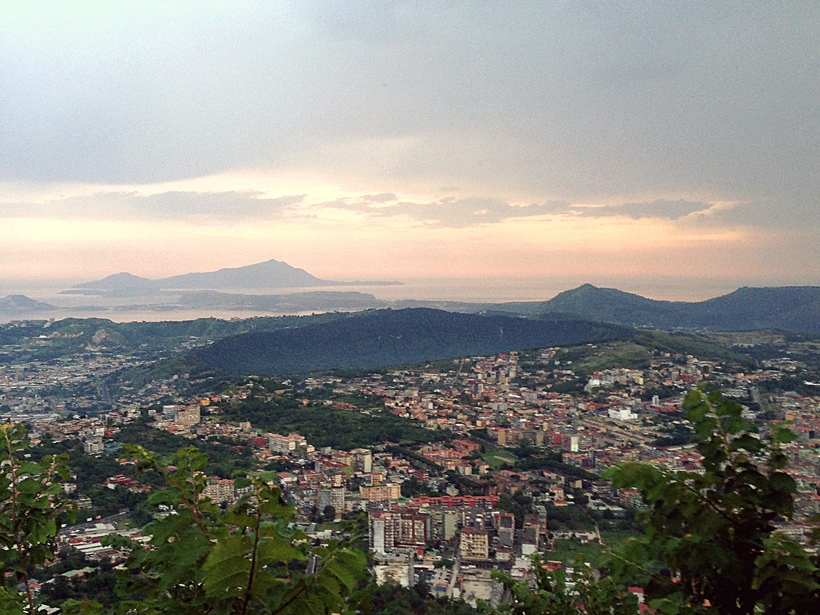Source: Journal of Geophysical Research: Solid Earth
On the western coast of Italy, just to the west of the city of Naples, lies a restless volcanic area called the Campi Flegrei caldera. The caldera, which lies largely under water, contains several volcanic spots that have been active in recent geologic history. Vents in the region have a significant chance of erupting again.
Researchers are interested in quantifying the likelihood of both when and where the next eruption could happen within the caldera. Anticipating such an event could help prevent human deaths and mitigate damage to nearby infrastructure and industries.
Here Bevilacqua et al. set out to combine the caldera’s eruptive record with probability models that can forecast the time frame of possible future eruptions and where in Campi Flegrei they are likely to happen.
The caldera is 12 kilometers wide and pockmarked with craters and cinder cones from past volcanic events. The last event occurred in 1538, leaving a cone called Monte Nuovo. From a geologic standpoint, in the past 15,000 years Campi Flegrei went through three epochs of frequent and closely spaced eruptions interrupted by periods of quiescence, some lasting thousands of years.
The researchers created two models to study the caldera’s eruptive past and future. First, they developed a quantitative uncertainty model for the historical eruption record and for the volume of erupted materials to study the caldera’s rate of activity. This model showed that all three epochs of activity included clusters of eruptions. In addition, two of the three epochs had a lower activity rate at their beginnings. The model also highlighted that the caldera’s eastern side has been much more active than the western side, generating eruptions in greater size and number.
The scientists then created a long-term temporal probability model based on the available eruptive record to study the clustering pattern of Campi Flegrei. Under the assumption that the Monte Nuovo eruption represents the beginning of a new eruptive epoch, model results, on average, estimate that the next eruption in the Campi Flegrei caldera is likely to occur within 100–120 years. The models indicate that the eruption could occur as soon as 4–5 years from now or as distant as 400–500 years from now (corresponding to the 5th and 95th percentile bounds of the model variability). However, such time estimates increase significantly, up to even more than 1000 years, if Monte Nuovo is not assumed to be the beginning of a new eruptive epoch and/or only western side activity is considered.
The authors hope that their analysis will help to identify the main gaps in the knowledge of the eruptive record and thus reduce the uncertainty of their outcomes. They also hope that the combination of these results with monitoring data will bring volcanologists even closer to pinpointing the next volcanic event at Campi Flegrei. (Journal of Geophysical Research: Solid Earth, doi:10.1002/2016JB013171, 2016)
—Alexandra Branscombe, Freelance Writer
Correction, 7 December 2016: The article has been updated to reflect the correct location of Campi Flegrei.
Citation:
Branscombe, A. (2016), When might the Campi Flegrei caldera erupt again?, Eos, 97, https://doi.org/10.1029/2016EO063093. Published on 23 November 2016.
Text © 2016. The authors. CC BY-NC-ND 3.0
Except where otherwise noted, images are subject to copyright. Any reuse without express permission from the copyright owner is prohibited.

